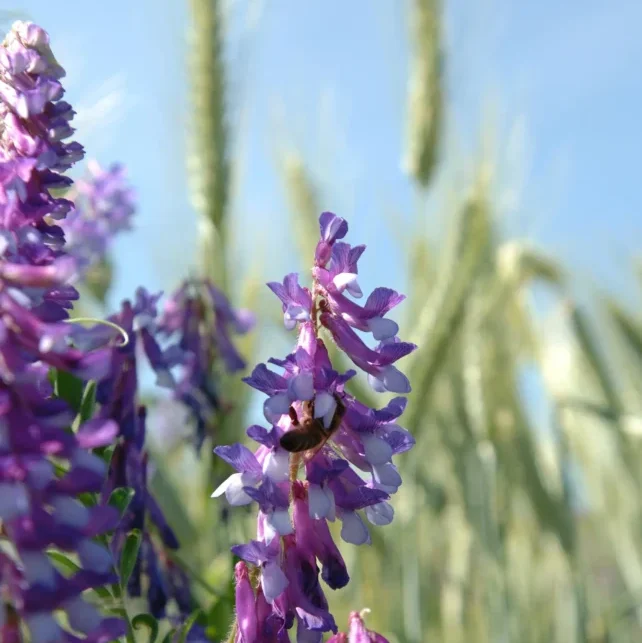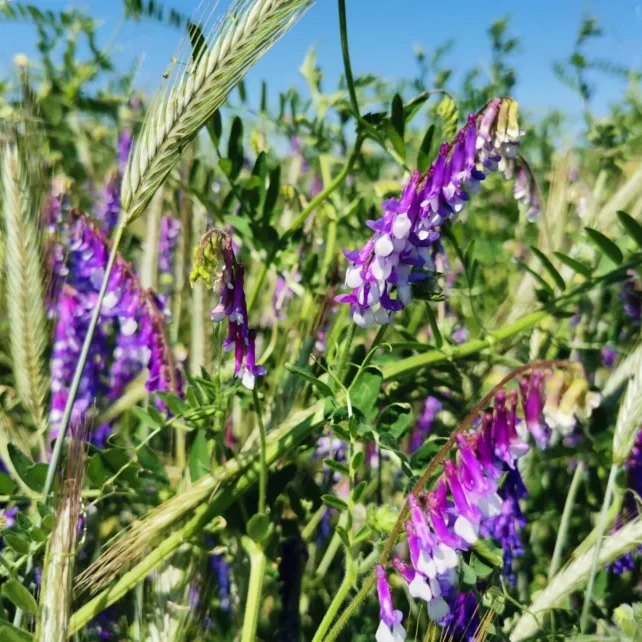Products Hairy vetch Hairy vetch Rea
Hairy vetch Rea




Special features of hairy vetch Rea
- The roots have the ability to symbiosis with nodule bacteria, fixing easily assimilable nitrogen from the air, which can be successfully used by successive plants.
- Valuable forage species grown for green fodder and seeds – improves the protein content of the first spring-fed green fodder.
Other information
• Very high seed protein content – about 30%.
• Sown with winter rye or winter triticale, it does not require separate cultivation and fertilization.
• Prefers fertile soils (alkaline or neutral) and sunny sites with moderate humidity.
• Ultimately grows to a height of 1 to 1.5 meters.
• Vetch’s deep root system prevents soil erosion.
• In the first period of its growth, it needs good moisture conditions – quite sensitive to drought, especially when it is at the stage of flower bud formation, as well as flowering.
• Very good frost resistance; it overwinters well and can withstand frosts as low as -20 °C with snow cover.
• High health profile – very resistant to fungal disease infestation.
• Also used as a melliferous plant.
• It is the only variety of the hairy vetch registered in Poland.
Hairy vetch (Vicia villosa Roth.) is a winter green legume of temperate climates, which after years is again gaining popularity as a catch crop and fodder crop for green fodder.






